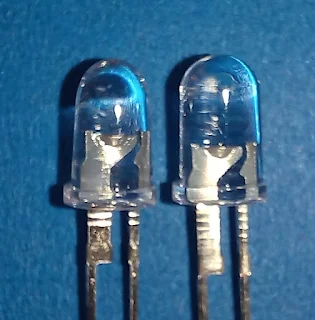Arriva l'auto nuova. E' dotata di sensori di parcheggio, retrocamera, frenata assistita, sensori di collisione, sensore di pioggia, sensore luci, cruise control, navigatore, sedili riscaldati, specchietti motorizzati, il profumo di auto nuova. Ha anche le ruote, i sedili ed un volante, certo. Fai un bel giro. Poi ti capita di fare la spesa e scegli il supermercato con ampio parcheggio coperto dove puoi lasciarla lontana dagli sportelli altrui.
Arrivi con le borse, apri il bagagliaio e.... buio. Nero! Sbirci dentro per cercare l'interruttore della luce di cortesia ma non c'è. Non c'è nemmeno la luce! Hai speso tante migliaia di euro per accaparrarti il frutto del lavoro di tanti progettisti e LORO si dimenticano di mettere un piccolo, economico ma utilissimo sistema di illuminazione nel bagagliaio! Tra l'altro, parere personale, apprezzeresti molto di più la luce nel bagagliaio degli specchietti retrovisori regolabili elettricamente. E costa pure meno. O sbaglio?
E signori, questa soluzione non fa solo da luce di cortesia per il baule. Dato che si può spostare, può seguirci nel cofano motore se dobbiamo controllare i liquidi o accompagnare la lettura di un libro/giornale senza scaricare la batteria dell'auto (che se poi non parte son dolori).
La batteria dura almeno un paio di mesi e si può ricaricare mentre si è in viaggio usando un cavetto USB adatto (la mia barra LED è arrivata con il suo cavetto).
Spesa totale? 5 euro più dieci minuti del proprio tempo.
Nota sull'utilizzo di questa versione. La barra luminosa si controlla con un singolo pulsante: alla prima pressione resta sempre accesa, con un'altra pressione (fa un lampeggio) si accende quando rileva movimento ed è buio, con un'altra pressione (fa tre lampeggi) si accende quanto rileva movimento indipendentemente dalla luminosità esterna. Con la quarta pressione si spegne. Tenendo premuto il pulsantino si attiva il dimmer per regolare la luminosità. Quindi per l'utilizzo nel bagagliaio, partendo da spenta, premete due o tre volte il pulsantino.
Per i curiosi, l'auto in questione è una Suzuki Ignis del 2017. La stessa auto prodotta nel 2020 ha la luce di cortesia nel bagagliaio, ma questa soluzione fa più luce!




































